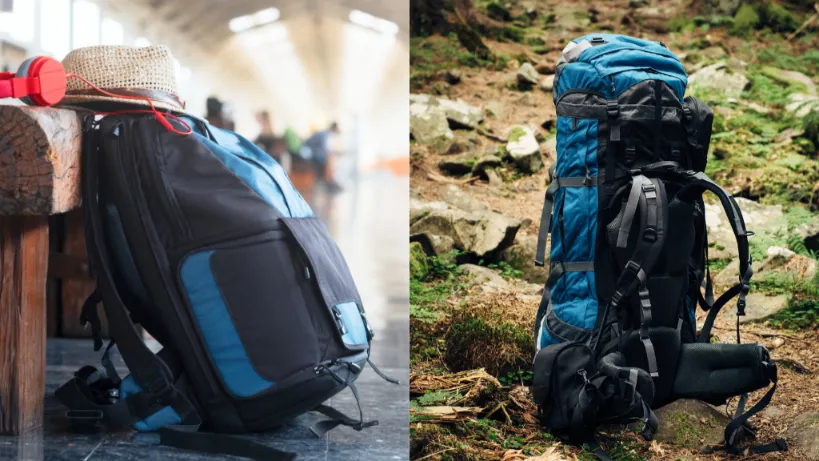Have you ever wondered why picking the right hiking backpack feels almost as important as choosing the right pair of boots? Well, it’s because it is!
Hiking backpacks aren’t just any old bags. They’re optimized to carry heavier weight well all day, crafted from more durable materials, offer better weather protection, and have those oh-so-handy exterior pockets among other standout features.
After testing more than 10 backpacks, brands like YETI, Osprey, and REI really stood out for us. However, no matter the brand or features, a backpack MUST fit well and feel comfortable even after hours of hiking to secure its place in our ranking.
In this guide, you’ll find only the ones that won’t let you down when you’re miles away from civilization and need them the most.
What Kinds of Backpacks Are Best for Hiking?
Best Overall: YETI Panga Pack 28 | Check Price
Best Lightweight: Cotopaxi Batac 16 L Del Dia Pack | Check Price
Best on Budget: Gregory Nano 18 Daypack | Check Price
Best for a 1 Day Trip: Osprey Daylite Pack | Check Price
Best for a 2-3 Days Trip: REI Co-op Flash 55 Pack | For Men | For Women
Best for a 3+ Days Trip: Mountain Hardwear AMG 75 Pack | Check Price
YETI Panga Pack 28

KEY FEATURES
PROS
CONS
I was new to YETI products when I got this pack as my first purchase, but it’s been the best backpack I’ve owned so far. It’s also the most durable backpack in our ranking.
One standout feature is its exceptional waterproofing. You can submerge this pack under water or in mud, and rest assured, everything inside will be completely dry.
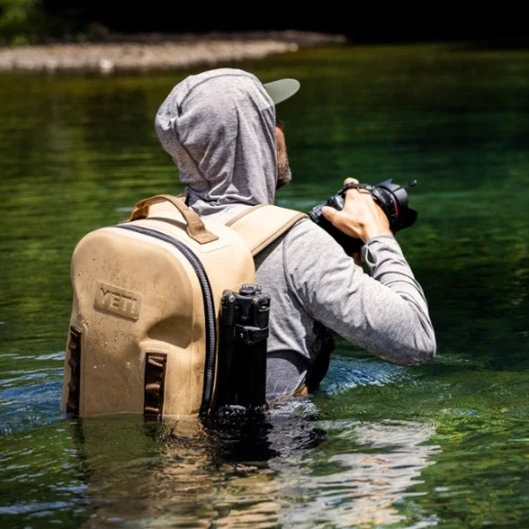
The bag holds its shape remarkably well, making it super easy to organize your gear and lay things flat. Plus, the shoulder straps along with the removable webbing chest strap and hipbelt, offer unmatched comfort, stability, and security while you hike.

Another impressive feature is how it resists punctures and abrasion, ensuring it stands strong against rough terrain.
With a capacity of 28 liters, you’ll have ample room to pack all your essentials for a day-long hike or even longer. However, if you’re looking for a backpack specifically for quick hikes that only last a couple of hours, this may not be the best option due to its weight (4 pounds).
If I had to mention a tiny improvement, it would be adding a simple external elastic pocket for a water bottle. This would make the pack even more convenient.
Verdict
The YETI Panga will be a solid investment for you if you seek durability, waterproofing, and reliability in your backpack. Once you buy it, it will last for years to come.
Cotopaxi Batac 16 L Del Dia Pack
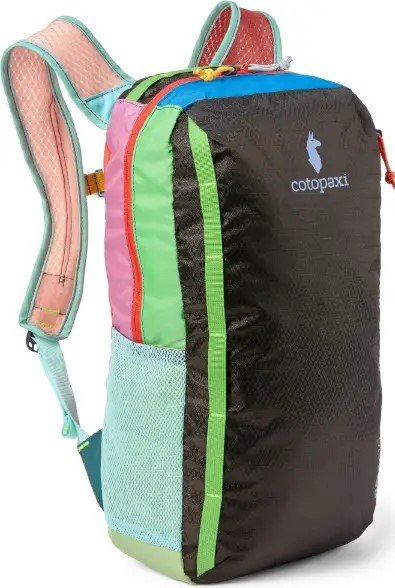
KEY FEATURES
PROS
CONS
Let’s start with the unique design of this pack. The one-of-a-kind Del Dia style truly sets it apart. Crafted from remnant materials by skilled employees who put their creativity into each piece, no two bags are the same. You’re basically carrying a piece of art on your back!

One thing I absolutely adore about this backpack is its versatility. It fits snugly inside my larger pack, so when I reach my destination, I have a trusty day pack that’s lightweight and doesn’t hog space in my luggage.
The main compartment is spacious, with a handy netted zipper pocket at the top for keeping small essentials secure. There’s also a side zip pocket for quick access to items when you need them in a flash. The small netted open pocket inside is a neat touch for stashing your phone or other valuables.
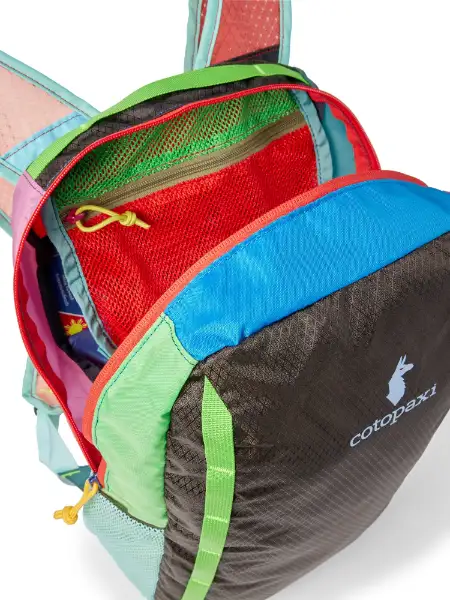
I can’t overlook the practicality of the two mesh water bottle pockets. They comfortably hold bottles up to 30 oz, ensuring you stay hydrated on the go. However, keep in mind that larger bottles might not fit, so that’s something to consider if you carry hefty hydration gear.

With a 75 to 210 denier nylon shell, it’s tough enough to handle rugged trails while remaining lightweight at just 11 ounces.
Verdict
Wrapping it up, the Cotopaxi Batac Del Dia boasts a nearly perfect rating of 4.8 out of 5 stars on REI – a testament to its quality and functionality.
The fact that each pack is one-of-a-kind adds a special touch to this already impressive product.
Gregory Nano 18 Daypack
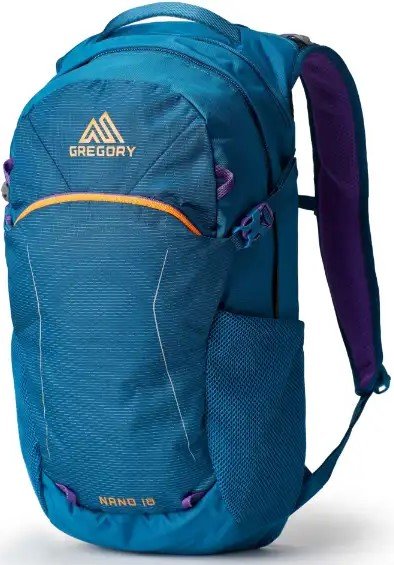
KEY FEATURES
PROS
CONS
The Gregory Nano 18 Daypack is an affordable gem that has quickly become one of my top picks for hitting the trails.
First off, the price tag is hard to beat at just $65, making it budget-friendly without compromising on quality.
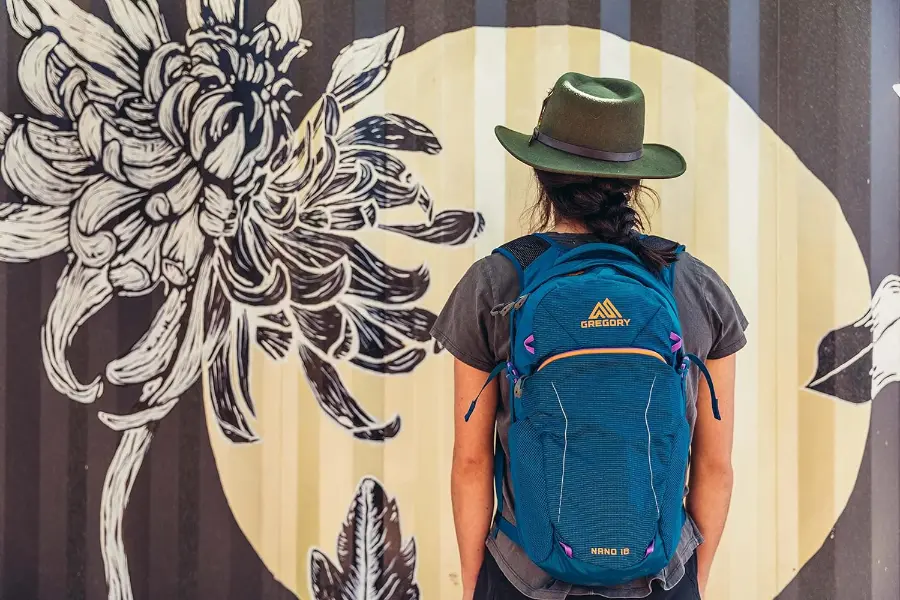
The capacity of 18 liters strikes a sweet spot, providing ample space for your stuff without feeling bulky. The large zip-access main compartment ensures easy packing, while the quick-access zippered front pocket comes in handy for storing smaller items like keys or snacks.
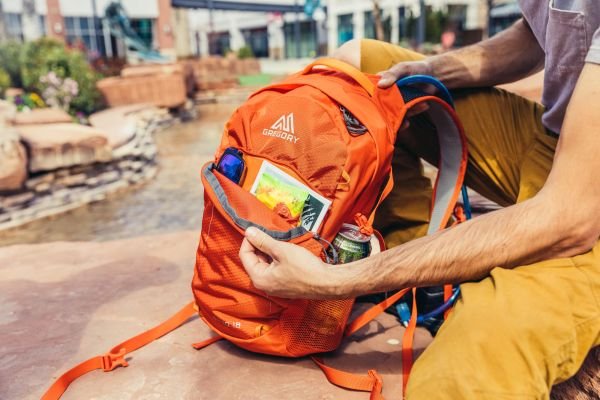
One of the features I really appreciate is the hydration reservoir compatibility. Whether you’re carrying a water bladder or a tablet, the independent zippered pocket with routing has got you covered.
The dual compression side straps and side-mesh pockets offer convenient storage options, while the tuck-away webbing hipbelt adds extra support when needed.
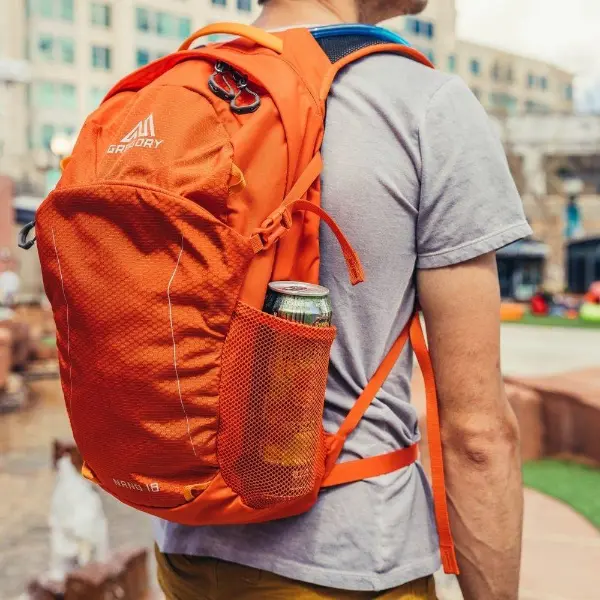
One of my favorite aspects of this daypack is its versatility. It easily accommodates two water bottles and still leaves room for essentials like camera gear, an iPad, lunch, and spare clothes. However, I do wish it had one more internal pocket for better organization.
Verdict
The affordable price, ample storage capacity, and thoughtful design make the Gregory Nano a top pick for hikers and backpackers alike.
Its versatility and durability make it suitable for a variety of outdoor activities, from day hikes to overnight trips. While it may not have all the bells and whistles of more expensive backpacks, it definitely holds its own in terms of quality and functionality.
Osprey Daylite Pack

KEY FEATURES
PROS
CONS
The Osprey Daylite is the smallest backpack in our ranking with 13 liters of space. But don’t let its size fool you. This little backpack packs a punch with its lightweight, durable design and is totally reservoir compatible. Perfect for when you want to move fast and light.
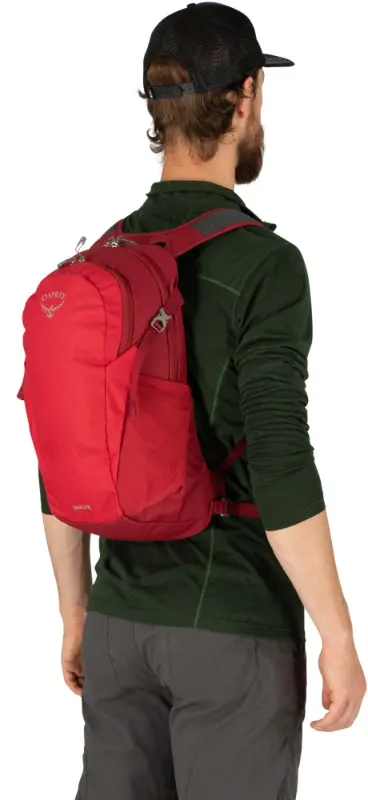
The main compartment opens wide, so you can easily grab what you need without having to dig around. And for those who can’t live without their gadgets, the multifunctional interior sleeve can snugly fit a hydration reservoir, a 13-inch laptop, or a tablet.
With dual side compression straps and dual water bottle side mesh pockets, everything stays in place while you’re on the move.

Sure, the water bottle pockets might give you a bit of a squeeze if you’re trying to fit anything over 24 oz, but for most of us, that’s plenty.
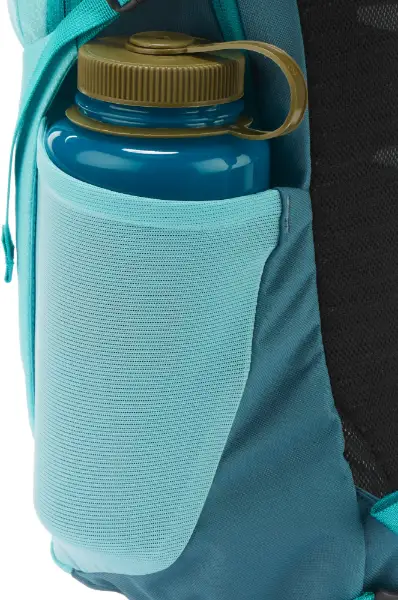
And here’s something I absolutely love: it doesn’t try to be everything to everyone. It’s straightforward and efficient, making it an excellent choice for those days when you just need the essentials. I’ve used it to tote my clothes and hygiene products on trips, and once I’ve unpacked, it becomes my faithful companion for exploring new trails.
Verdict
Planning a quick morning hike or need an everyday carry that won’t let you down? The Osprey Daylite is definitely a winner.
On a recent 4-5 mile hike, this pack was a dream. Super comfortable and easy to access, it’ll let you enjoy the journey without worry.
REI Co-op Flash 55 Pack
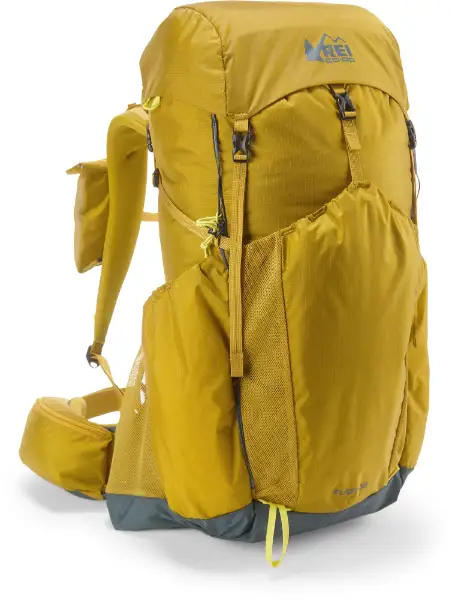
KEY FEATURES
PROS
CONS
For 2-3 day hikes, this is my top pick, hands down.
What sets the REI Flash apart is its adjustability. The torso length can be fine-tuned, making it a breeze for folks of different sizes to use it comfortably. Ever thought about sharing your pack or passing it down? This feature makes it super easy.

This pack is lightweight yet robust enough to handle the long hauls. It carries like a dream, making you forget it’s even there, thanks to its internal frame and trampoline-style back.
One of my favorite features has to be the new and improved daisy chain. It’s stronger and comes with multiple attachment points, allowing you to customize your load on the exterior. Whether it’s strapping on a yoga mat or extra gear, you’ve got options.
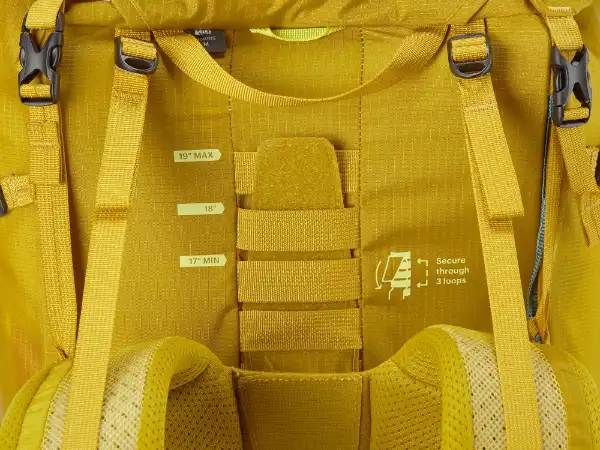
And for those who love organization, the Flash 55 doesn’t disappoint. The Packmod compression straps are a genius addition. They let you run straps from any loop to any other, sculpting the pack to your load.
For storage, this pack has got you covered with 9+ exterior pockets and an internal sleeve for hydration reservoirs. The large buckled front pocket is a lifesaver for quick access to your rain shell or other essentials.
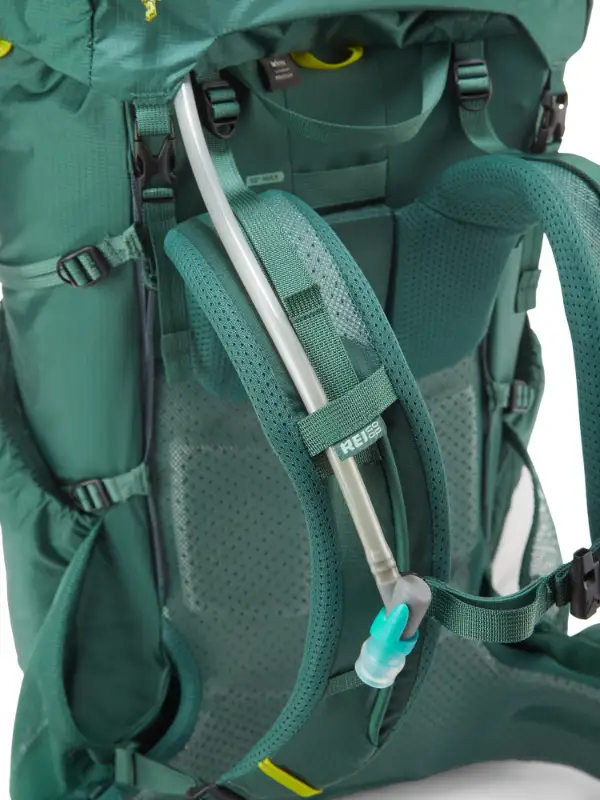
The water bottle pockets are angled forward on the hipbelt, so you don’t have to perform acrobatics to stay hydrated. It’s these little details that make a big difference.
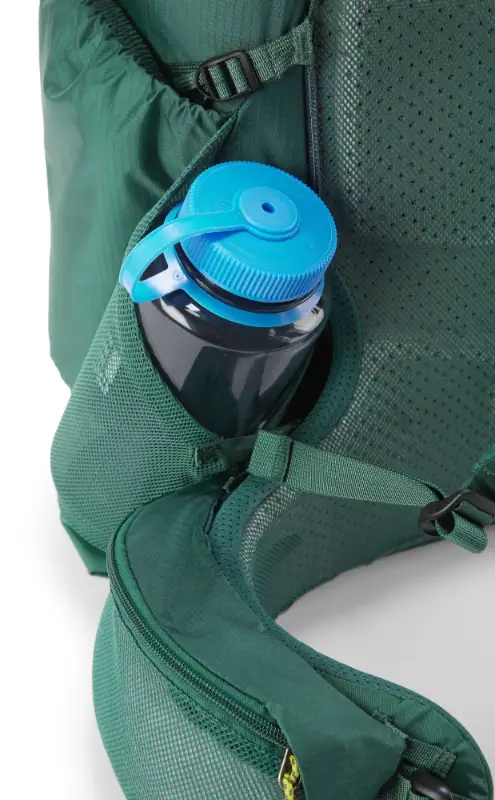
At a capacity of 53-57 liters and weighing in at 2 lbs. 12 oz. – 2 lbs. 14 oz., it’s impressively lightweight for its size.
The only downside I’ve noticed is the squeak sound from the shoulder straps. It’s not a deal-breaker, but it can get pretty annoying after some time if you’re not used to it.

Verdict
At $200, it’s a steal. Considering its features and performance, you’d be hard-pressed to find a better deal. Sure, ultra-light packs might save you a pound or two, but they come with a heftier price tag and less customization.
That’s why I think the REI Co-op Flash is a stellar choice for anyone looking to hit the trails for a few days. It’s comfortable, customizable and won’t break the bank. Simply perfect!
Mountain Hardwear AMG 75 Pack

KEY FEATURES
PROS
CONS
The AMG 75 isn’t your average backpack. It’s especially designed for those longer treks (3+ days) in challenging terrains and conditions where carrying heavy loads is a must.
While it might not win any awards for being the lightest pack out there, the features it packs are nothing short of amazing and unique.
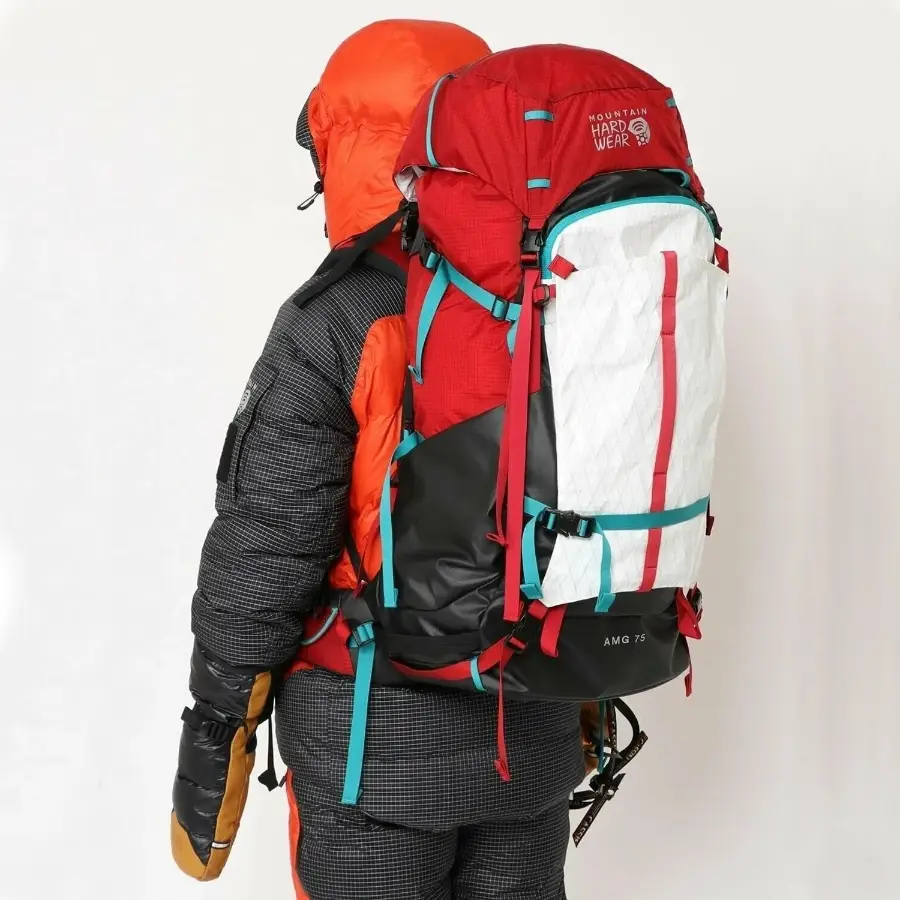
The AMG 75 is crafted with ripstop nylon, which basically means it’s tough as nails. Coupled with a light and strong 7000-series aluminum frame, this pack is ready to shoulder your load, no matter how rugged the terrain gets.
This pack is ideal for chilly expeditions. It’s thoughtfully designed with easy space for snow shoes, an axe, and crampons. With this backpack, you’re heading up to snowy peaks with everything you need securely strapped to your back.
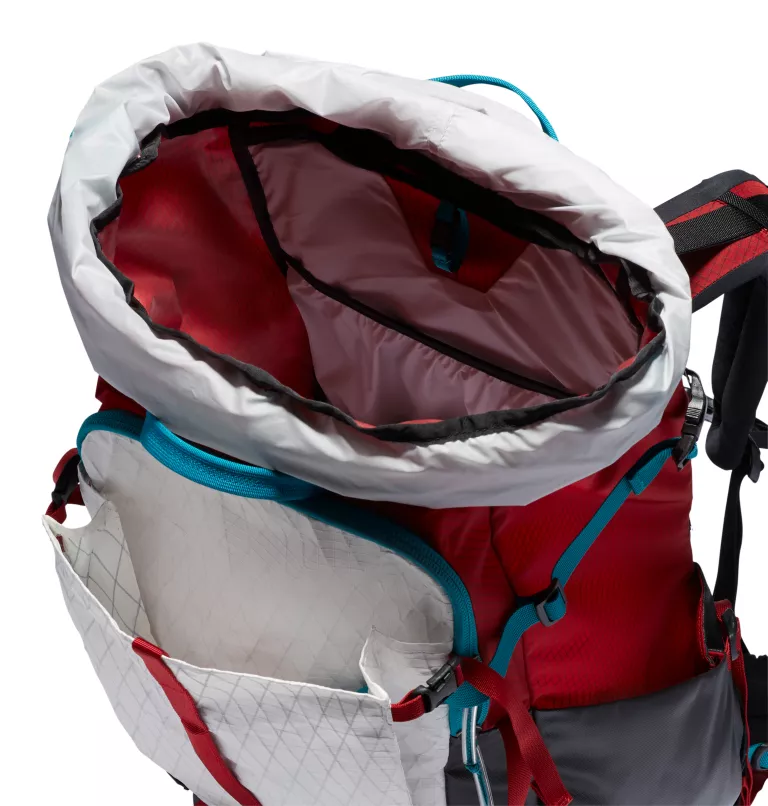
It has a capacity of 75-78 liters, weighing in at about 4 lbs. 13.1 oz. – 4 lbs. 15.4 oz., depending on the size you go for. It’s also reservoir compatible, meaning staying hydrated isn’t going to be an issue.
With 3 exterior pockets plus the main compartment, organizing your gear is relatively easy.
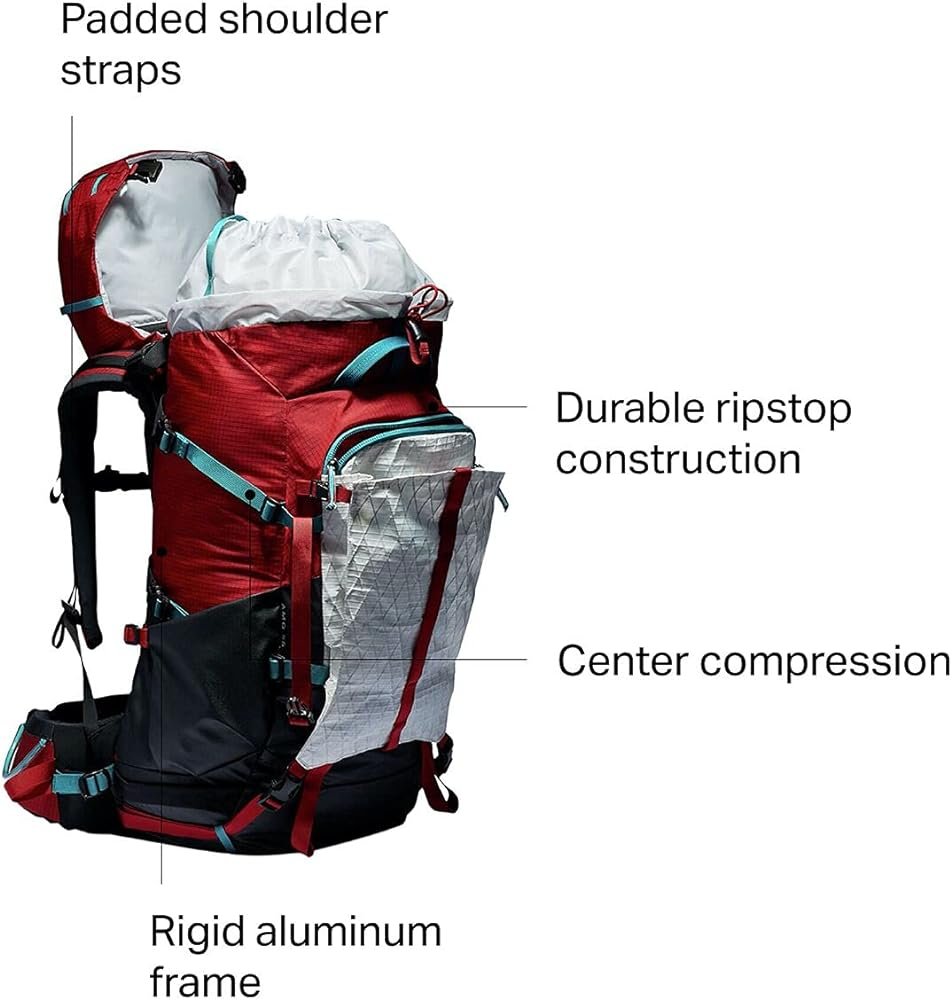
If I had to pick a bone with the AMG 75, it would be the water bottle pockets. They’re a bit difficult to reach with the pack on, but it’s a small price to pay for such a well-designed pack.
Verdict
The Mountain Hardwear AMG 75 Pack is a BEAST. It’s comfortable, no matter how much gear I stuff into it, and it’s proven itself time and again on the toughest of trails.
If you’re looking for a pack that can handle the extremes while keeping you comfy, this might just be the best hiking backpack out there.
What Features to Look for in a Hiking Backpack?
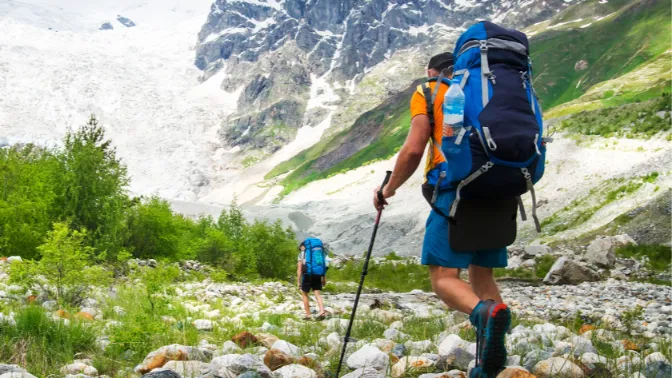
Comfort
If there’s one thing you take away from this guide, let it be this: A comfy backpack is a MUST. Look for backpacks with padded shoulder straps, a cushy back panel, and a hip belt that feels like a gentle hug.
Durability
You need a backpack that can take a hit and come out looking like a champ. Materials such as nylon and polyester are simply the best options here. They’re tough, they’re water-resistant, and they’ll stick with you through thick and thin.
Storage
Who doesn’t love a good pocket or two…or ten? When you’re in the wild, being organized is extremely important. You don’t want to be that person who stops the group every five minutes because they can’t find their water bottle or snack.
A well-designed backpack has a place for everything. Look for one with:
- multiple compartments,
- easy-access pockets,
- and even a spot for your hydration bladder.
And speaking of hydration, many backpacks come with a hydration system, which is basically a fancy term for a built-in water pouch with a drinking tube. It’s like having a personal water fountain with you at all times.
If you’re planning longer hikes, this feature should be on your list. No more fumbling around for your water bottle. Just take a sip and keep moving.
Weight Distribution
Of course, a good backpack carries your stuff, but it does so in a way that you barely feel the weight. This trick is all about how the pack distributes weight across your body. A solid internal frame, adjustable straps, and load-lifter straps can make a heavy load feel lighter.
Conclusion
If there’s one thing I hope you’ve picked up by now, it’s that choosing the right backpack isn’t something you should rush into. It’s like picking a hiking partner. You want someone (or something, in this case) that’s got your back, quite literally.
The backpacks we’ve talked through in this guide are loved by the hiking community far and wide. Each one has amazing ratings and reviews, and we’ve put them through their paces on our own hikes over the years.
So, take a moment to think about what kind of hikes you love. Are you out there for a day, or are you the weekend hiker type? Maybe you prioritize lightness above all else, or perhaps durability and water resistance are key for your unpredictable adventures.
Whatever it is, make that choice with care. The perfect backpack for you is waiting to join you on your next hike.

Lukas Heller
Hey there! I’m Lukas, co-founder of BigfootHiking.com, alongside my adventurous wife Martha. Originally from Germany, I landed in Phoenix, Arizona, in 2015, where I’ve been scouting out new trails ever since (though they’re getting scarce!). By day, I’m a software developer, but my heart belongs to hiking – I’m always plotting our next trip. When I’m not coding or on the trails, you’ll find me hanging out with our Pit Bull, Zeus.



